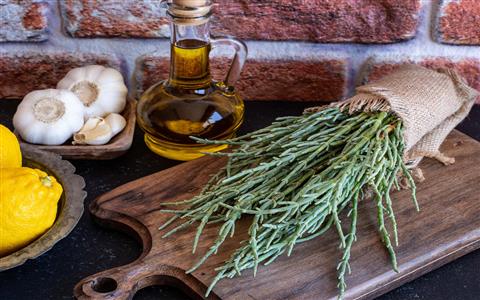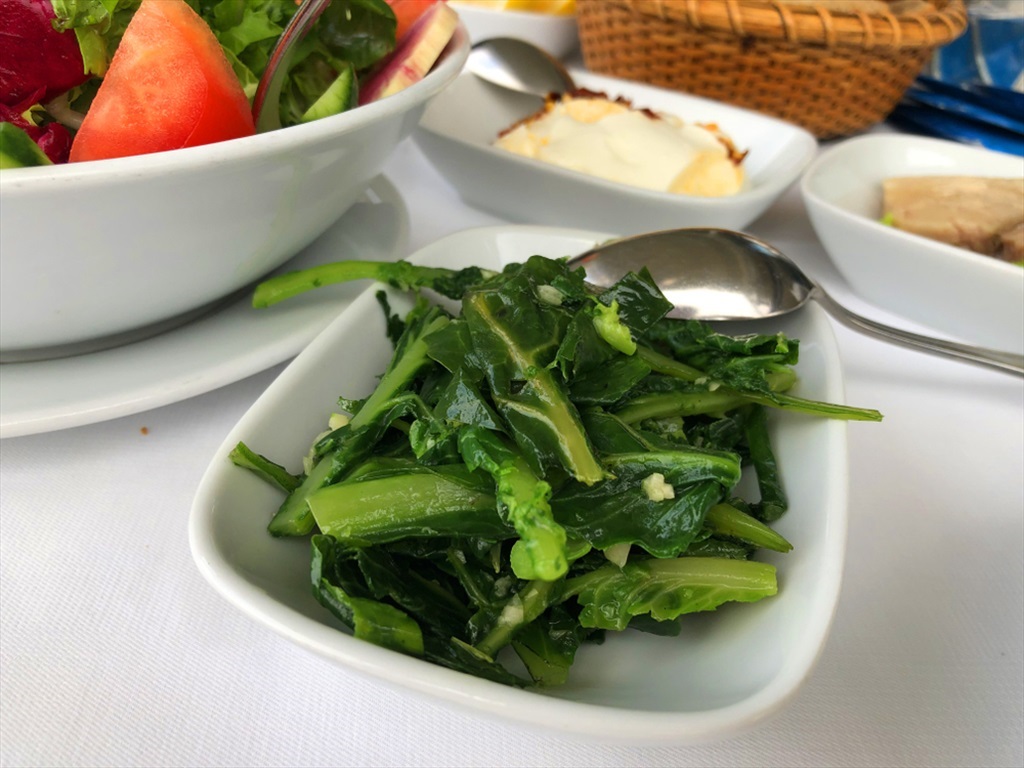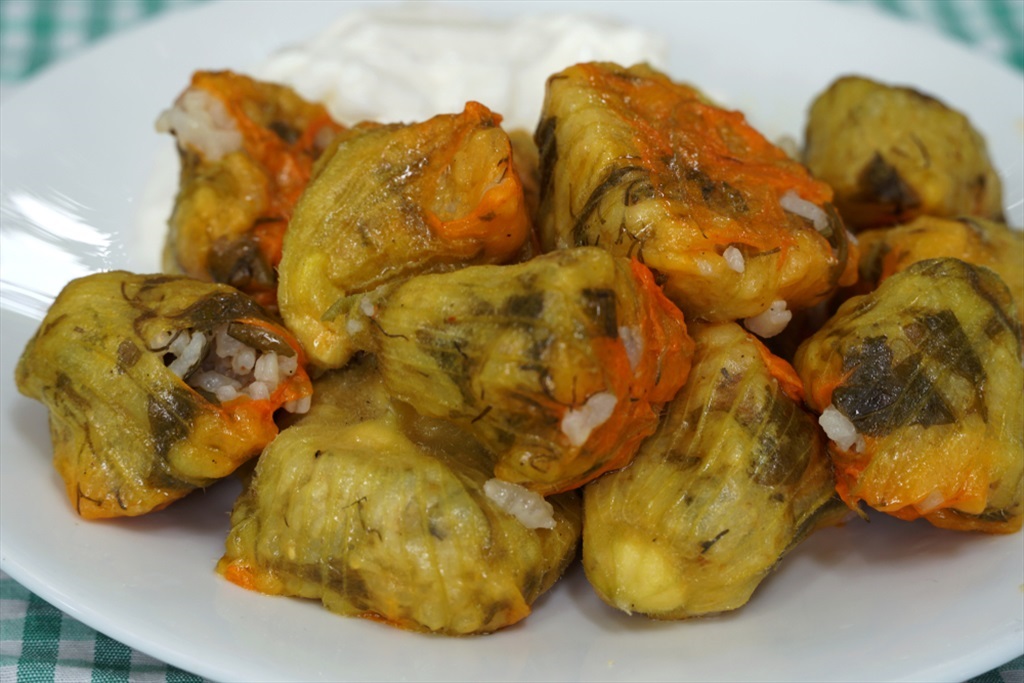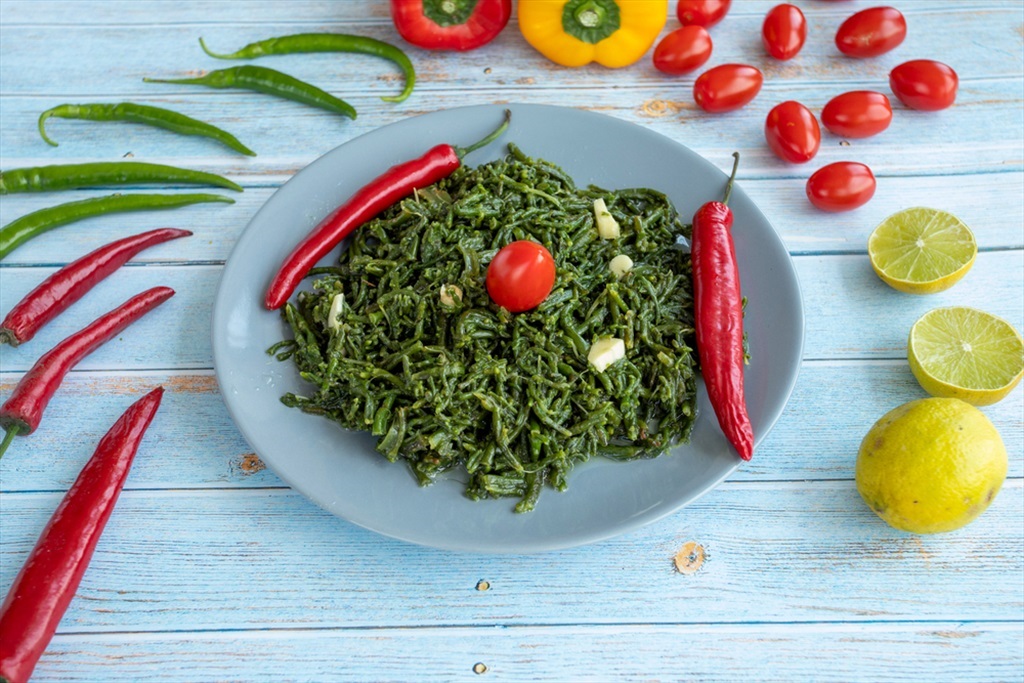Izmir is famous for its food as well as its natural and historical riches. Herbs that you cannot find anywhere else and delicious dishes made from these herbs constitute an important part of Izmir and Aegean cuisine.
Herbs are not well known in most countries. Although it is known in Turkey in the Aegean region diversity and richness is not much known in other regions. The variety of herbs is so great that it is difficult to name them all.
Sarmaşık (Ivy), Ebegümeci (Hibiscus), Isırgan otu (Nettle), Cibez, Hindibağ (Chicory), Şevketi Bostan, Deniz Börülcesi (Seabean), Hardal otu (Mustard Herb), Eşek dikeni (Milk Thistle) Kenger (Acanthus) , Kuzu kulağı (Sorrel) Yaban Enginarı (Wild Artichoke) , Arapsaçı (Tangle) are just some of the most consumed herbs of Izmir and Aegean coasts.
Herbs grown with the flavor of the Aegean climate and soil are a source of vitamins and minerals. These herbs have been grown and consumed for a long time, just like the olive oil produced and used in the region for 2500 years, and they add completely different flavors to Izmir cuisine that you cannot taste anywhere else.
Herbs have an important place in Aegean cuisine, where healthy, natural and proper nutrition is prominent. Besides their taste, they are also famous for being a cure-all and it’s not ending their health benefits. While herbs with antioxidant value such as Chicory and Mustard are very beneficial for health, they are among the herbs that prevent uric acid accumulation in the body such as Eşek Helvası and Wild Asparagus. While Capers have an appetizing and strengthening feature, it is known that Hibiscus cleans the blood.
While the herbs are cooked, they are not boiled much, even they are preferred to be steamed, so it keeps its green color. They are consumed as a hot meal, as well as salads and appetizers of almost all of them. We can say that it is indispensable, whether it is cooked or consumed raw. Spices and additives are generally not preferred in herb dishes, they are cooked in their pure and natural form. Stuffed zucchini flowers, roasted bitter herbs, nettle salad, artichoke, tomato cowpea, hibiscus with milk, Şevketi Bostan with lamb meat and radish herb with olive oil are among the priority flavors of the Aegean Region.
Let's take a closer look at some of these herbs.
Acı Soğan (Onion)
In fact, bitter onion, which is the onion of wild hyacinth, grows around Izmir Alaçatı and is boiled twice because it is quite bitter and eaten with olive oil and lemon.
Arapsaçı (Tangle)
Thanks to the fennel, an essential oil in its leaves, the tangle, which has an effective and strong smell similar to anise, is used both in cooking and in salads. It has a gas extractor feature.
Cibez
Cibez, also known as cücük in some regions, is a wild cabbage variety. Cibez, a soft and delicious herb, is boiled and then flavored with olive oil and lemon.
Deniz Börülcesi (Sea Beans)
Sea cowpea, which grows after the waters recede in places where the water tides on the sea coasts, is very delicious with its salty and sour taste. Its salad enriched with garlic and vinegar is delicious. Its preparation is a bit troublesome. Since it is very salty, salt should not be added while cooking. It is recommended for those suffering from iodine deficiency.
Ebegümeci (Hibiscus)
Hibiscus, which is cooked with olive oil, is grown in many regions of the Aegean region and Anatolia. It is known that hibiscus, which is used not only in table but also in natural medicine, has many benefits.
Gelincik Otu
This wild flower has an ugly scent and normally bitter in taste. But when the green leaves in the form of sprouts are roasted with herbs before they bloom, a different flavor is obtained. It is known that poppy herb, which is used not only in the table but also in natural medicine, has many benefits.
Hindiba (Chicory)
Chicory from the daisy family has a slightly bitter taste but is not bothersome. The leaves are used as a salad as well as hot food. The leaves of the wild chicory are collected in the spring and consumed as a medicinal herb. Chicory, also known as radika, is a source of calcium and minerals.
Isırgan Otu (Dead Nettle)
Stinging nettle is an indispensable part of Izmir cuisine and its benefits are endless. Stinging nettle soup is famous and attracts attention with its unique flavor. Stinging nettle is also cooked and consumed as herbal tea. At the same time, oil, soap and shampoo are produced from nettle, which is used as a cosmetic product.
Kazayaği Otu (Goose Feet Herb)
which takes its name from the fact that its leaves resemble goose feet, is a fragrant plant that grows in the Aegean and Mediterranean regions. It is made into patties, salads, and even into pickles. It is also consumed by roasting.
Sarmaşık (Ivy)
It has a different flavor with a slightly bitter taste. It is generally consumed by boiling a little, then roasting and cracking the eggs to relieve the pain. It lowers cholesterol and urea and helps to remove edema from the body.
Şevketibostan
Şevketibostan, also known as milk thistle, is a plant that grows in winter. It is found in nature from January until the end of March. The dish made with lamb meat is very famous. It is also cooked by boiling it. It is said to be a very healing herb.
Tarhana Herb
Tarhana grass from the parsley family; It is known by many names such as hyssop and seedling. Tarhana grass is a 20-50 centimeter tall bushy plant with or without thorns, soft hairy, yellow flowers and a strong odor. It is also used by drying the leaves. Its leaves and flowering branches are added to the pickles, as the name suggests, to give flavor and aroma to tarhana.
Turp (Radish)
When it is roasted and the egg is broken on it, its taste is not enough. Therefore, it is also consumed in breakfast. It is known that radish grass, which is boiled and made a salad, has many benefits.






Comments
No comment left, would you like to comment?